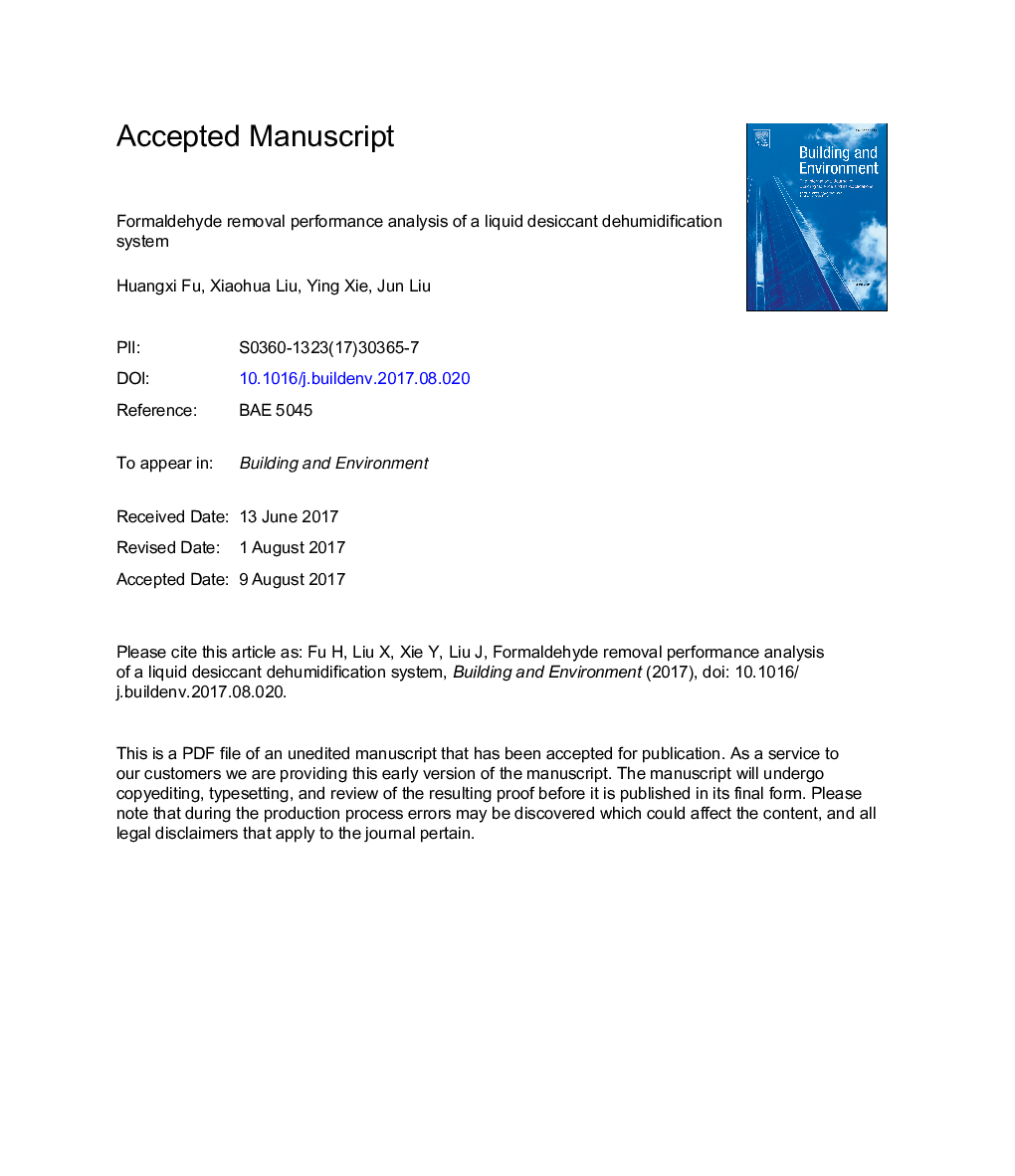| Article ID | Journal | Published Year | Pages | File Type |
|---|---|---|---|---|
| 4911422 | Building and Environment | 2017 | 37 Pages |
Abstract
Liquid desiccant (LD) systems are an efficient method for humidity control. Moreover, LD systems also function to purify the air and remove volatile organic compounds such as formaldehyde. This study aims to analyze the performance of a LD system for formaldehyde removal from indoor air while simultaneously considering air dehumidification requirements. A theoretical model is proposed to predict the formaldehyde removal efficiency (εformaldehyde) of the LD system with various flow mediums, such as an air-LiBr solution, air-LiCl solution, and air-CaCl2 solution. Prior to assessing the LD system performance with the model, Henry's law constants (HLCs) of formaldehyde in the three solutions are tested at the salt concentration range of 30-50 wt% and at the temperature range of 10-50 °C. Based on the results, the correlation equation of the HLC's temperature dependence are given, and then adopted for the simulation model. The effects of the number of mass transfer units of formaldehyde (NTUmf), formaldehyde concentration in the return air, solution flow rate, and airflow rate on system performance are investigated and compared with various flow mediums. The results indicate that NTUmf is a key factor influencing the εformaldehyde. However, the NTUmf do not influence the dehumidification performance of the LD system. Both the εformaldehyde and dehumidification performance remain unchanged with the increase of formaldehyde concentration in the return air. Both the εformaldehyde and dehumidification performances decreased when the solution flow rate increased, and they likewise decreased with increased airflow rates.
Related Topics
Physical Sciences and Engineering
Energy
Renewable Energy, Sustainability and the Environment
Authors
Huangxi Fu, Xiaohua Liu, Ying Xie, Jun Liu,
